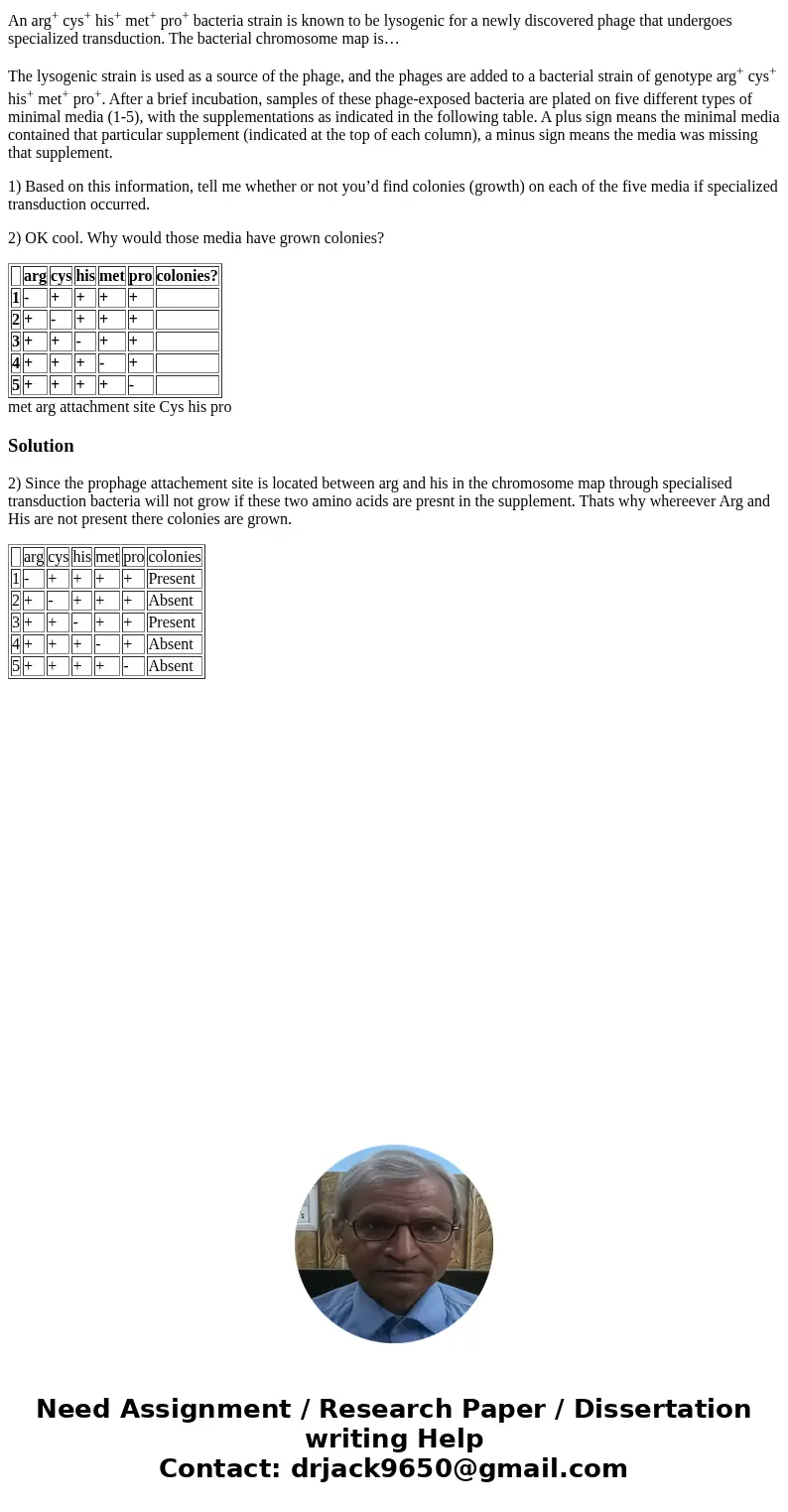An arg cys his met pro bacteria strain is known to be lysoge
An arg+ cys+ his+ met+ pro+ bacteria strain is known to be lysogenic for a newly discovered phage that undergoes specialized transduction. The bacterial chromosome map is…
The lysogenic strain is used as a source of the phage, and the phages are added to a bacterial strain of genotype arg+ cys+ his+ met+ pro+. After a brief incubation, samples of these phage-exposed bacteria are plated on five different types of minimal media (1-5), with the supplementations as indicated in the following table. A plus sign means the minimal media contained that particular supplement (indicated at the top of each column), a minus sign means the media was missing that supplement.
1) Based on this information, tell me whether or not you’d find colonies (growth) on each of the five media if specialized transduction occurred.
2) OK cool. Why would those media have grown colonies?
| arg | cys | his | met | pro | colonies? | |
| 1 | - | + | + | + | + | |
| 2 | + | - | + | + | + | |
| 3 | + | + | - | + | + | |
| 4 | + | + | + | - | + | |
| 5 | + | + | + | + | - |
Solution
2) Since the prophage attachement site is located between arg and his in the chromosome map through specialised transduction bacteria will not grow if these two amino acids are presnt in the supplement. Thats why whereever Arg and His are not present there colonies are grown.
| arg | cys | his | met | pro | colonies | |
| 1 | - | + | + | + | + | Present |
| 2 | + | - | + | + | + | Absent |
| 3 | + | + | - | + | + | Present |
| 4 | + | + | + | - | + | Absent |
| 5 | + | + | + | + | - | Absent |

 Homework Sourse
Homework Sourse